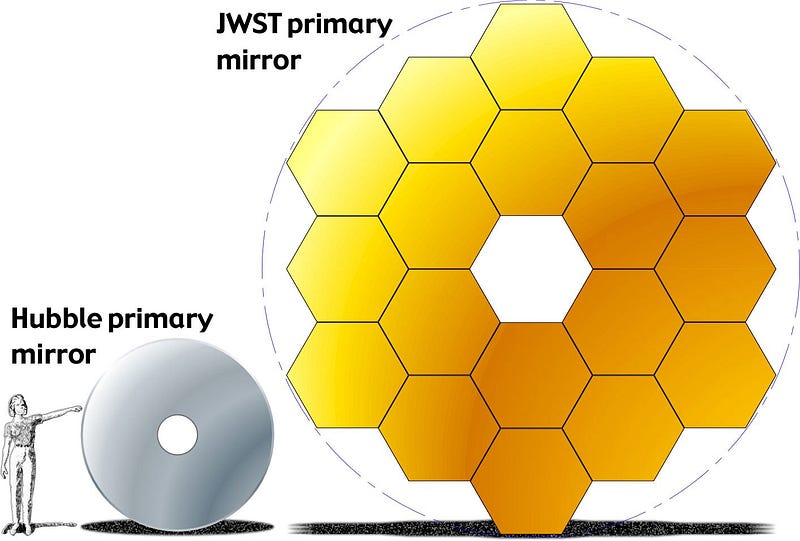# Understanding the Justification Behind the $10 Billion James Webb Telescope
Written on
Chapter 1: The Launch of a New Era
On December 25, 2021, the James Webb Space Telescope (JWST) was successfully launched. This milestone captured significant media attention, introducing many outside the field of astrophysics to the project. For those unfamiliar, the JWST's journey has been marked by numerous delays, budget escalations, and rescheduling over the course of more than a decade. This raises an important question: Is this ambitious project worth the investment?
What is the Role of the James Webb Space Telescope?
The James Webb Space Telescope was conceived shortly after the highly successful Hubble Space Telescope began its mission. Designed primarily to observe in infrared wavelengths, the JWST is capable of studying planets within our Solar System, as well as distant stars and galaxies. For astrophysicists, this telescope opens up new possibilities to explore some of the universe's earliest formations, discover potentially habitable exoplanets, and answer fundamental astronomical questions.

The JWST's mirrors are significantly larger than those of the Hubble, marking a major leap in observational capability. Credit: NASA
The Necessity for Advanced Technology
To achieve its ambitious goals, the JWST had to be more advanced and larger than its predecessor, necessitating the development of cutting-edge technology that was not available when the project was initially planned in the 1990s. The challenges of predicting scientific and engineering progress have contributed to underestimations regarding both the time and costs involved in bringing this project to fruition.
Assessing the Value of the Investment
From the perspective of both scientists and astronomy enthusiasts, the advancements in astrophysics driven by the JWST make it a worthwhile investment. However, the benefits extend beyond mere scientific discovery. The engineering breakthroughs required for deploying the largest satellite ever launched have significant implications for future satellite technology. The innovations that enable a satellite to compactly fit into a launch vehicle and subsequently unfold in space are paving the way for increasingly sophisticated satellites. Given the critical roles satellites play in communication, weather forecasting, and disaster response, these technological advancements are likely to prove invaluable.
The Ripple Effect of Scientific Progress
Throughout history, scientific advancements have often catalyzed technological innovations that impact society at large. For instance, the foundational work of Isaac Newton and James Clerk Maxwell continues to influence modern engineering. Similarly, the early designs of computing pioneers such as Charles Babbage and Ada Lovelace laid the groundwork for the computers we rely on today. Progress in fields like particle physics and data analysis not only advances astronomy but also contributes to advancements in engineering, healthcare, and data science. However, the broader benefits of such research may take considerable time to materialize.
As is often the case with scientific endeavors, the full potential of the James Webb Space Telescope may not be realized until many years into the future.
Chapter 2: Financial Aspects and Implications
In examining the financial implications of the JWST, it's essential to understand how the $10 billion investment translates into scientific and technological advancements.
How NASA Spent $10 Billion On The James Webb Telescope | True Cost - This video delves into the financial aspects of the JWST project, exploring how the budget was allocated and the rationale behind the investment.
The question of cost versus benefit is a critical discussion point surrounding the JWST.
$1 vs $10 BILLION TELESCOPE - This video compares the JWST to other telescopes, shedding light on the stark differences in technology and capabilities that come with higher investments.